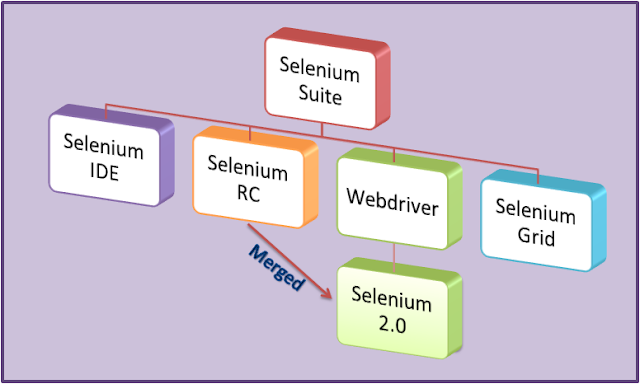Purpose :
World web is browsed by customers with different knowledge levels, while testing websites (static/dynamic). A dept should concentrate on various aspects to make effective presentation of website in www.
Aspects to Cover :
- Functionality
- Usability
- User Interface
- Database
- Compatibility
- Security
- Performance
- Server Log Files
1. Functionality :
1.1 Links :-
Objective is to check for all the links in the website
- All Hyperlinks, All Internal Links, All External Links, All Mail Links, Image Links.
- Check that the link takes you to the page it said it would.
- Check all of your links to other websites.
- Are all referenced web sites or email addresses hyperlinked ?
- Check all the links that would pointing to right environment.
1.2 Forms/Screen :-
Check for the integrity of submission of all forms
- All field level checks
- All field level validations
- Functionality of [Submit], [update], [view]
- Handling of wrong inputs
- Default value if any (standard)
- Optional versus Mandatory fields.
- Radio buttons
- Is all the data inside combo/list box are arranged in proper order ?
- Are all of the parts of a table or form present ? Correctly laid out ?
- Does a scrollbar appear if required ?
1.3 Database :-
Verify whether the operations performed from front end to back end or not.
Two types of errors that may occur in web application
Data integrity : Missing or wrong data in table.
Output Errors : Errors in writing, Editing or reading operation in the table
- Check the maximum field lengths to ensure that there are no truncated characters ?
- If numeric fields accept negative values can these be stored correctly on the database and does it make sense for the field to accept negative numbers ?
- If a particular set of data is saved to the database check that each value gets saved fully to the database. (i.e.) Beware of truncation (of strings) and rounding of numeric values.
2. Usability :
How Simple customer can browse or user friendliness.
2.1 Navigation :-
Navigation describes the way user navigates with in a webpages, between user interface controls (Buttons, text boxes, combo boxes and dropdown lists etc.).
- Application navigation is proper through tab.
- Application navigation through mouse.
- Main features accessible from the main/home page (mother window)
- Any-hot keys, control keys to access menu.
2.2 Contents :-
Correctness is whether the information is truthful the accuracy of the information is whether it is without grammatical or spelling errors. Remove irrelevant information from your site this may otherwise cause.
- Spelling & Grammer
- Updated information
- Background/Foreground
- Tools tip message
- Mouse over message
3. User Interface :
All about exactly website looks like (view)
Basic Guidelines for web User Interface
- Every dropdown box should have the first choice as NONE (it could be any other meaningful sentence such as 'choose one' or 'select')
- Horizontal Scrolling is not preferable in general. Avoid using horizontal scroll bar ensure that the use of vertical scroll bar is judicious.
- Illegal operations should give POP UP messages (messages should be simple and clear).
- Positive POP UP messages should be displayed (Submitted, deleted, updated, done, cleared).
- Avoid long scrolling dropdown list make it short.
4. Compatibility:
4.1 Platforms :-
Check for the website compatibility with
- Windows
- UNIX
- Linux
- Macintosh (if applicable).
4.2 Browser :-
- Internet Explorer
- AOL
- Firefox
- Safari
- Google Chrome
5. Security :
- Valid & invalid Login.
- Limits defined for the no. of tries.
- Can it be bypassed by typing URL to a page inside directly in the browser?
- Secure pages should use HTTPS protocol.
- Test password security and password policy enforcement.
- Check application logout functionality.
- Cookie information should be stored in encrypted format only.
- Check session cookie duration and session termination after timeout or logout.
- Verify the log files are maintained to store the information for traceability.
- Verify encryption is done correctly if SSL (SSL Certificate vendors VeriSign GeoTrust, SSL.com etc.) is used (if applicable).
- No access to edit scripts on the server without authorization.
- If Webpages is idle for 10 to 15 Minutes, session will expire.
6. Performance :
6.1
Connection Speed :-
- Try with different
connection speed.
6.2 Load
:-
- Will there be peak loads
& how systems react.
- Can your site handle a large
amount of users requesting a certain page.
6.3
Stress :-
- Stress testing is done in
order to actually break a site or certain features to determine how the
system reacts.
- Stress tests are designed to
push & test system limitations & determine whether the system
recovers gracefully from crashes.
- Check if page load time is
within acceptable range.
- Check page load on slow
connections.
- Check response time for any
action under light, normal , moderate and heavy load conditions.
- Check performance of
database stored procedures and triggers.
- Check database query
execution time.
- Check for load testing of
application.
- Check for stress testing of
application.
- Check CPU and memory usage
under peak load condition.
7. Server Log Files Testing :
For Every
client request to the server, server side client information will be stored
automatically in the form of logs.
Log
Contain :-
- Client Request
- Server response
- Data/Time of request
- Client IP address
There are
4 normal levels of logger available
Static
Level INFO:
The INFO
Level designates informational messages that highlight the progress of the
application.
Static
Level WARN:
The WARN
Level designates potentially harmful situations.
Static
Level ERROR:
The ERROR
Level designates potentially errors events that might still allow the
application to continue running.
Static
Level FATAL:
The FATAL
Level designates very severe error events that will presumably lead the
application.



